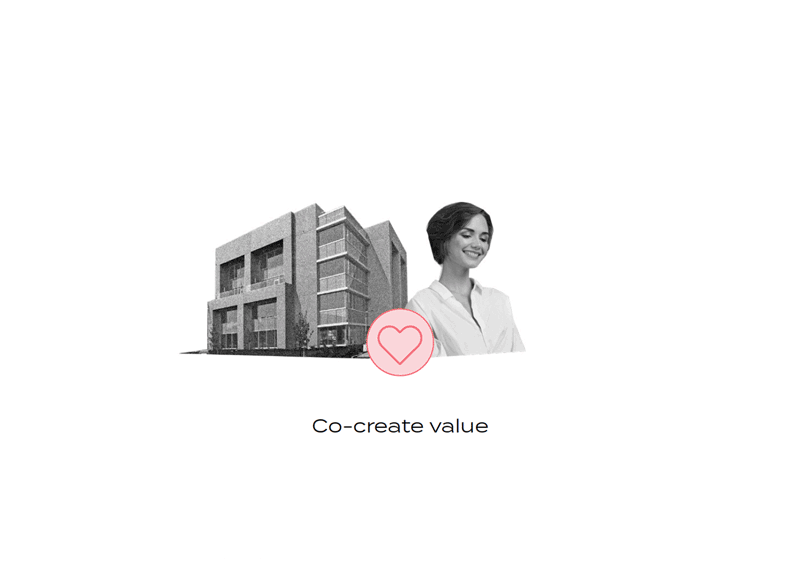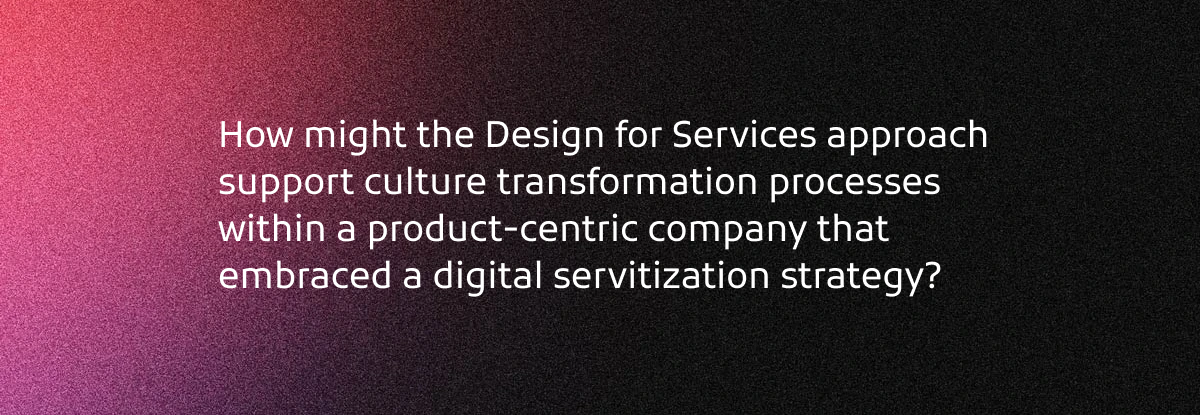Context
Digital technologies have definitely modified the economy. In an interconnected world, markets change quickly, with new competitors and fluctuating customer needs. Traditional companies have started digital servitization in this scenario to enhance customer satisfaction.
This process implies organizational and infrastructure changes but, most important, a cultural shift.
What is Digital Servitization?
It refers to “the deployment of digital technologies to support the transformation from a product-centric to a service-centric business model” *
Using the product-centric logic of value generation, companies define and embed value in a tangible asset and through selling exchange customers obtains that value.


Instead, being service-centric means companies apply skills & knowledge to create value propositions that could benefit customers.
Here, Digital technologies supply companies with new skills & knowledge, helping them to improve and adapt value propositions.
Based on the experience, customers will determine the value in use of the service. By receiving most suitable benefits and capabilities, service will become more valuable for customers.
The Challenge
Accomplishing a digital servitization does not refer only to the inclusion of service offerings but presupposes a bigger transformation:
- In company structures and processes
By updating core knowledge and skills to bring increased benefits to customers.
- Resources and capabilities for service innovation
Companies should learn and collaborate with customers to continuously adapt their value propositions.
- And, most importantly, a service culture.
A new system of values and beliefs in which service is central for co-creating value with customers instead of focusing on products.
The case study
Claro, is a large telecommunication company in Argentina that leads the economic sector with 38%, and offers internet based, mobile & fixed-line services for a final customer (B2C) and for companies (B2B).
In the case of Claro, as a part of the digital servitization process invests were concentrated on increasing digital technology such as cloud platforms.
They also created a new business unit called ‘Digital Experience’ , hiring ux designers, to redesign backend processes and services such as selling, installation, and customer support.
- Investments for transformation were not working as the company expected.
- Redesign projects did not improve experiences by creating significant value for customers.
- They still focused on technology and technical features. Efforts generally focused on digitizing physical touchpoints.
This situation has left management nowadays looking for new strategies for approaching service innovation.


The Action Research Project
The hypothesis is that by using a project as a participatory inquiry, designers can start conversations around why, what, and how the company does innovate services and introduce a new service-centric mindset. As a result, it will foster the transformation from a product-centric to service-centric culture.
The action research’s structure consisted of moments of Design and Reflection divided into three cycles.


Cycle 1
Exploring
This cycle was focused on understanding where they were and the current perspective of service.
The first co-design explored Why What, and How they innovate services. Generative tools help to reflect not only in product-related terms but also around value co-creation, service system thinking, and human-centered design practices.
In the end, they compared their purpose when redesigning services, value understanding, and design practices. Through this comparison, they could visualize if answers were more related to product-centric or more service-centric principles.
Results
- They became aware of misalignments between service-centric purposes and product-centric actions
- They could sense the need to change, mainly in the way to design services
- An apparent gap in value understanding came up, but it was not considered the cause of misalignments.

Cycle 2
Envisioning
This cycle evaluated new directions of a current project.
The co-design session was designed to: purpose changes in the design process within a specific project.
Activities focused on imagining new and more service-centric design processes, acknowledging current limitations, and proposing future actions.
Results
- Members started to recognize the organizational product-centric culture as the main obstacle
- Codesign methodology was selected as a practice to include aiming to gain a more holistic and user-centered view of services
- Resources were allocated to and introduced the new practice.

Cycle 3
Experiencing
This cycle was concentrated on building new service knowledge and integrating design practices into the current culture.
It started by mapping the current service and determining doubts to be addressed in the co-design pilot. In this process, the service mapping evolved from synthetic CJM to two blueprints that better represented the complexity of the service.
Then sharing session was held with all team members in which co-design methodology knowledge was amplified.
Two Codesign pilots performed in the company. One with actors of the service and the other with internal stakeholders.
After all, a retrospective session with them captured what worked, what could be improved, ideas for improvements, and future implementations.
Results
They were able to understand the service system in its complexity based on accurate data.
Started redefining what is valuable for users instead of improving technology performance, bringing innovation opportunities.
Most importantly, the team found motivation and clarity to continue transforming design practices more aligned with the purposes. This was boosted by the new perspective on service and the value that these practices bring.

General results
The results have demonstrated how designer work help:
- The Company to detach from a product-centric mindset by looking at services as systems where value is co-created.
- This new understanding unlocks the change in many aspects of the culture, such as adopting a service design methodology & tools.
- Leaving with more suitable perspectives and tools to support organizational purposes to innovate services and experiences.
Action research outcome: a guiding framework

The practical approach used in Claro has been summarized in a guiding framework, which can be replicated by other designers in product-centric companies facing digital servitization.
The main task of designers is to generate knowledge about value co-creation by exploring, reflecting on, and transforming different organizational dimensions—why, what, and how they innovate services.
To facilitate change, service designers adapt their role throughout the inquiry process. Initially, they steer the reflection around value co-creation systems. Once individuals grasp this new perspective, designers should train them to apply the newfound understanding of service through design methodologies. Finally, designers coach them to articulate the new understanding and practices within their current culture.
The inquiry should be visual and participatory to engage people in conversations that transform their beliefs, values, and behaviors.
Ultimately, the process can lead organizations to generate new questions or involve new people. Therefore, the model can be iteratively used to strike a balance between a culture that supports new service business models.


